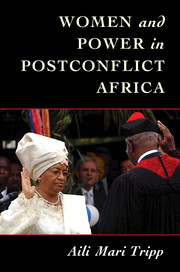Book contents
- Frontmatter
- Epigraph
- Dedication
- Contents
- List of Tables
- List of Figures
- Map of Africa
- List of Acronyms
- Acknowledgments
- Preface
- Part I Setting the Stage
- 1 Introduction
- 2 Pathways to Change in Women's Rights
- Part II Case Studies
- Part III New Openings for Women's Rights
- Part IV Gendered Outcomes
- Part V Future Research
- References
- Index
1 - Introduction
from Part I - Setting the Stage
Published online by Cambridge University Press: 05 November 2015
- Frontmatter
- Epigraph
- Dedication
- Contents
- List of Tables
- List of Figures
- Map of Africa
- List of Acronyms
- Acknowledgments
- Preface
- Part I Setting the Stage
- 1 Introduction
- 2 Pathways to Change in Women's Rights
- Part II Case Studies
- Part III New Openings for Women's Rights
- Part IV Gendered Outcomes
- Part V Future Research
- References
- Index
Summary
It is not difficult to hurt, but it is difficult to repair.
– South African proverbSince roughly the early 1990s and especially after 2000, some of the most dramatic changes in women's political engagement have occurred in countries that came out of major conflict. This is especially evident in Africa, where sixteen countries have ended major civil wars since 1986. Postconflict countries in Africa are making more constitutional and legislative changes related to women's rights compared with nonpostconflict countries. They have considerably higher rates of female legislative representation when compared with nonpostconflict countries, and they have more women in executive leadership positions. Postconflict Liberia, for example, had the first elected woman president in Africa; postconflict Uganda had a woman vice president for ten years; and postconflict Rwanda has the highest rates of female legislative representation in the world. The dominant party in postconflict Namibia is in the process of adopting a Gender Zebra Policy in which men and women share governance so that women and men both have 50 percent of positions in government, parliament, and state-owned enterprises.
This study asks: Why do countries that have experienced major civil conflict appear to be following a distinct and faster trajectory than nonpostconflict countries when it comes to adopting women's rights reforms and promoting female leadership?
I am using the term “postconflict” to describe countries where there has been a significant decline in the number of deaths related to conflict and where there has been a decline in hostilities. For purposes of generalization, I am focusing in this book on postconflict African countries that engaged in sustained and high-intensity conflict that ended after 1985. All of these countries had at least one year – and on average eight years of conflict – with over 1,000 recorded deaths per year, according to data collected by the Uppsala Conflict Data Program (UCDP) and the Peace Research Institute Oslo (PRIO). I am certain that most of these conflicts experienced considerably more deaths than what UCDP and PRIO report in their Armed Conflict dataset, but I take these measures simply to be rough indicators and a means by which to distinguish between levels of conflict. Thus, for the purposes of this study, countries experiencing high-intensity conflicts that ended after 1985 include Algeria, Angola, Burundi, Chad, Congo Brazzaville, Ethiopia (Eritrea), Liberia, Morocco (Western Sahara), Mozambique, Rwanda, Sierra Leone, Sudan, South Africa (Namibia), and Uganda.
- Type
- Chapter
- Information
- Women and Power in Postconflict Africa , pp. 3 - 32Publisher: Cambridge University PressPrint publication year: 2015
- 2
- Cited by

